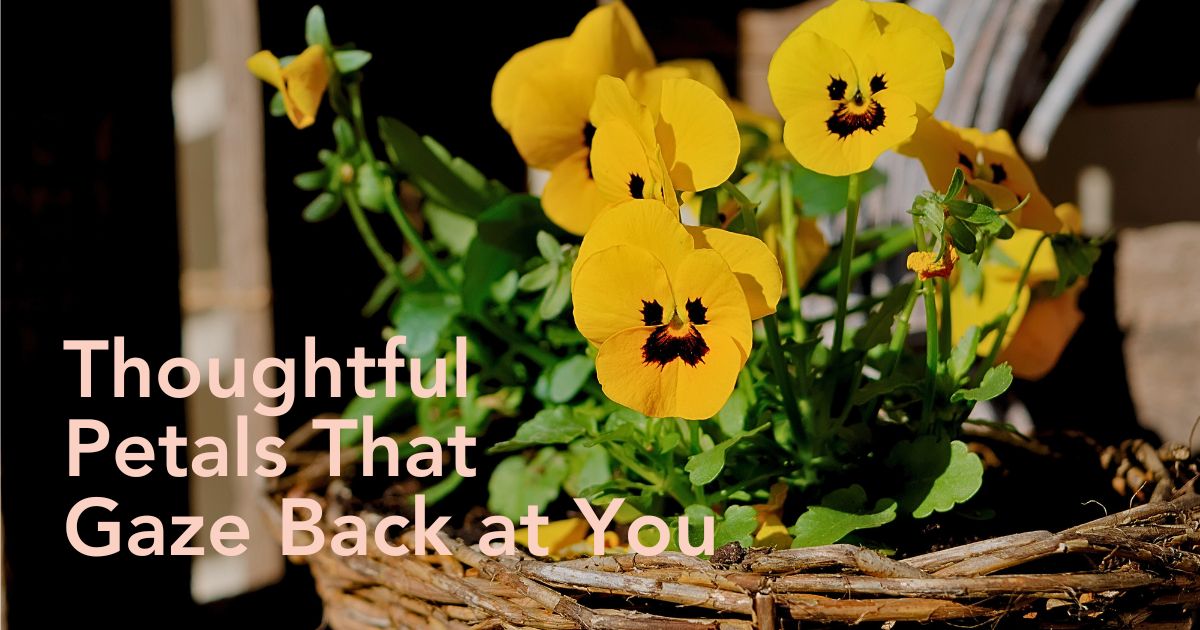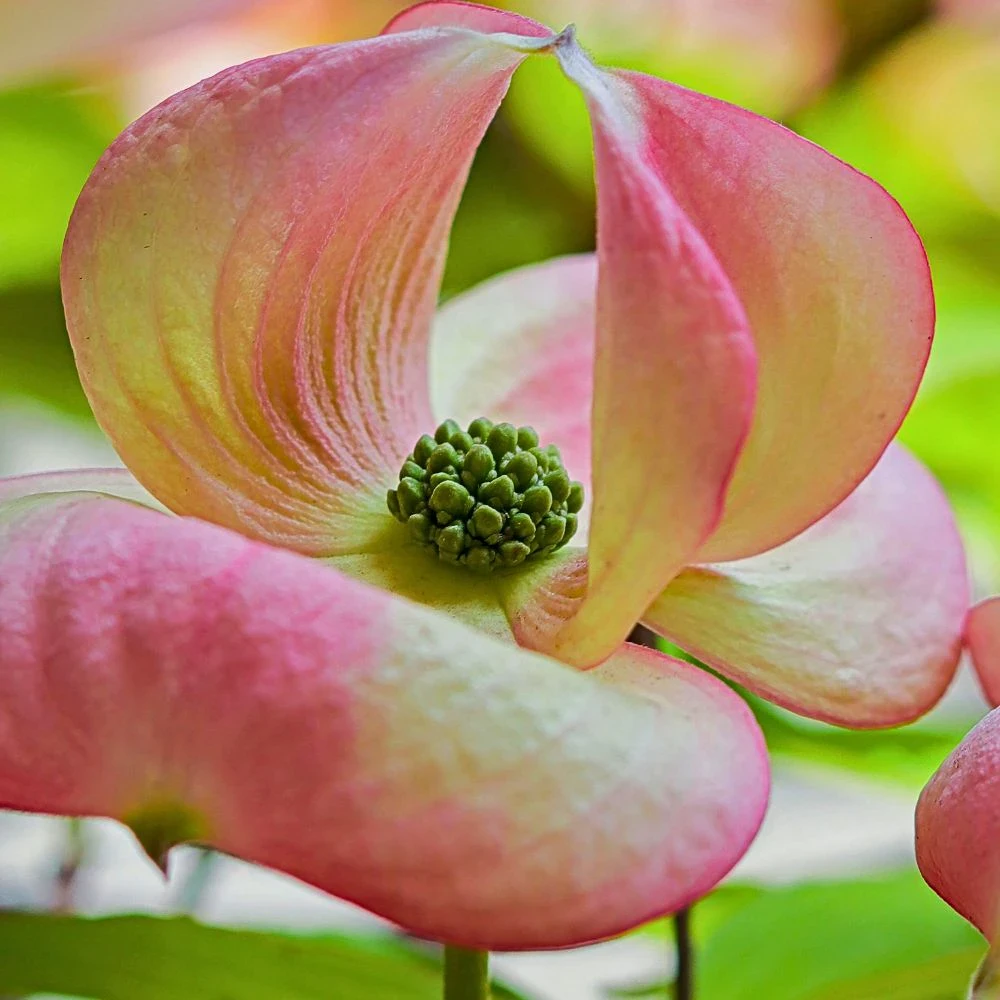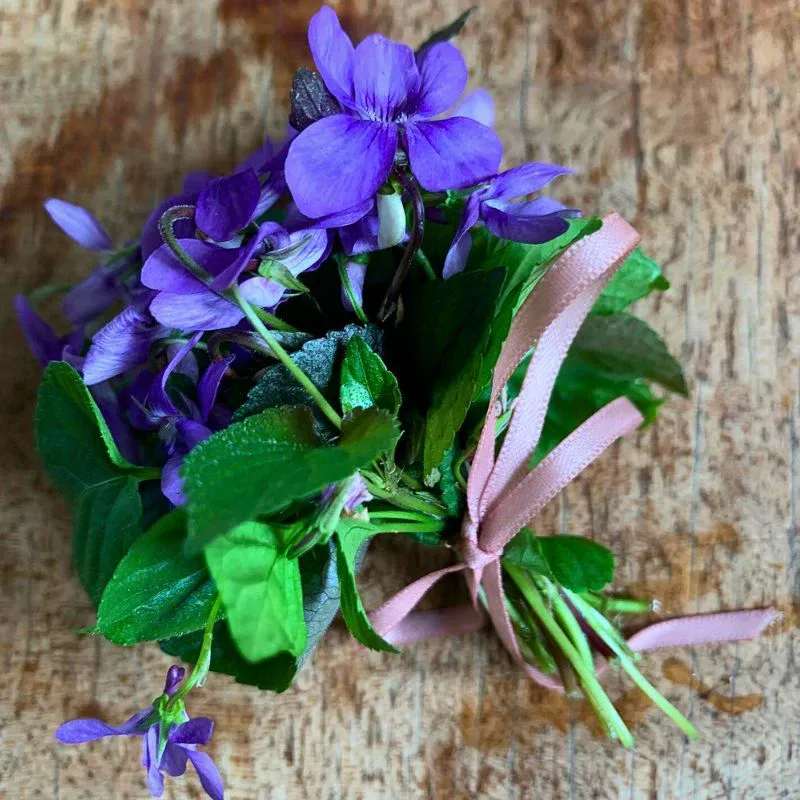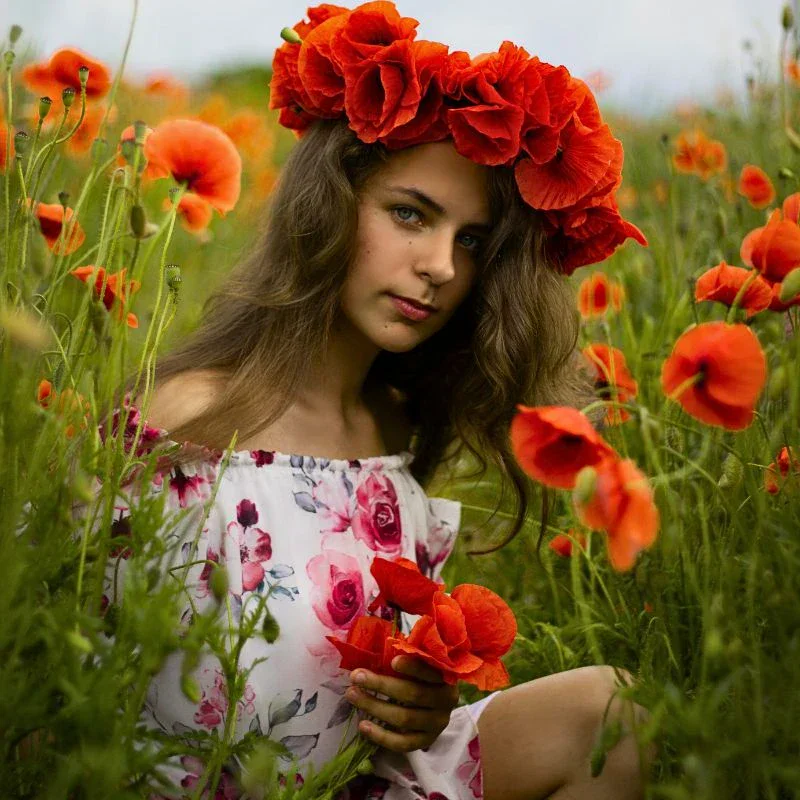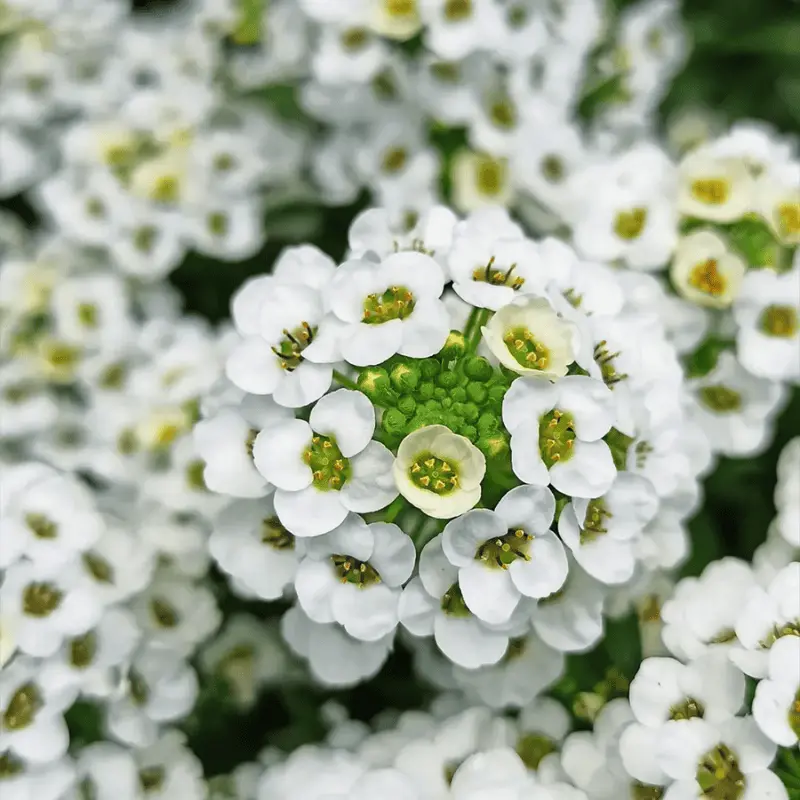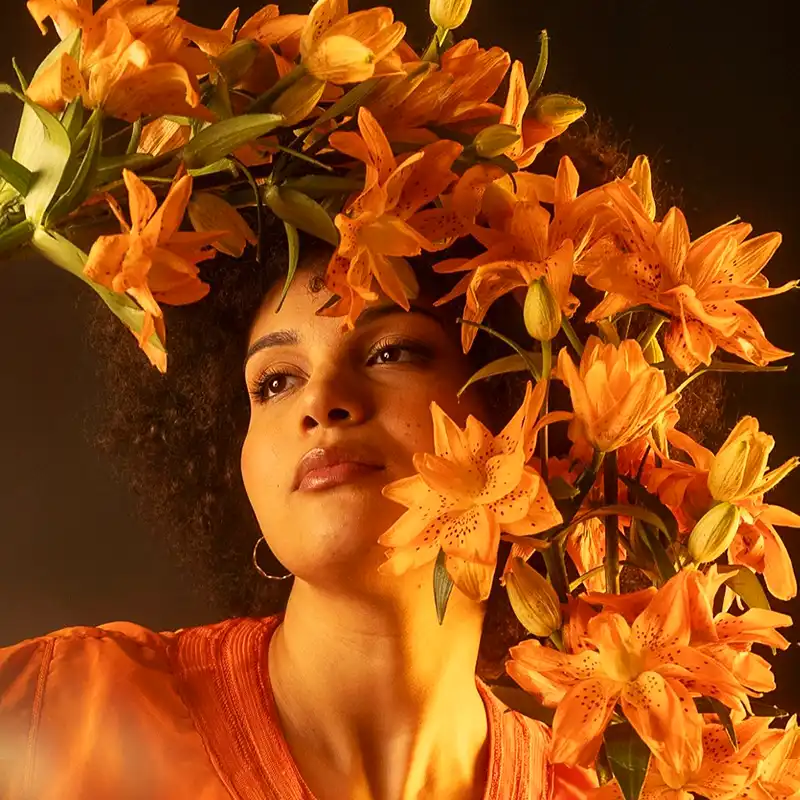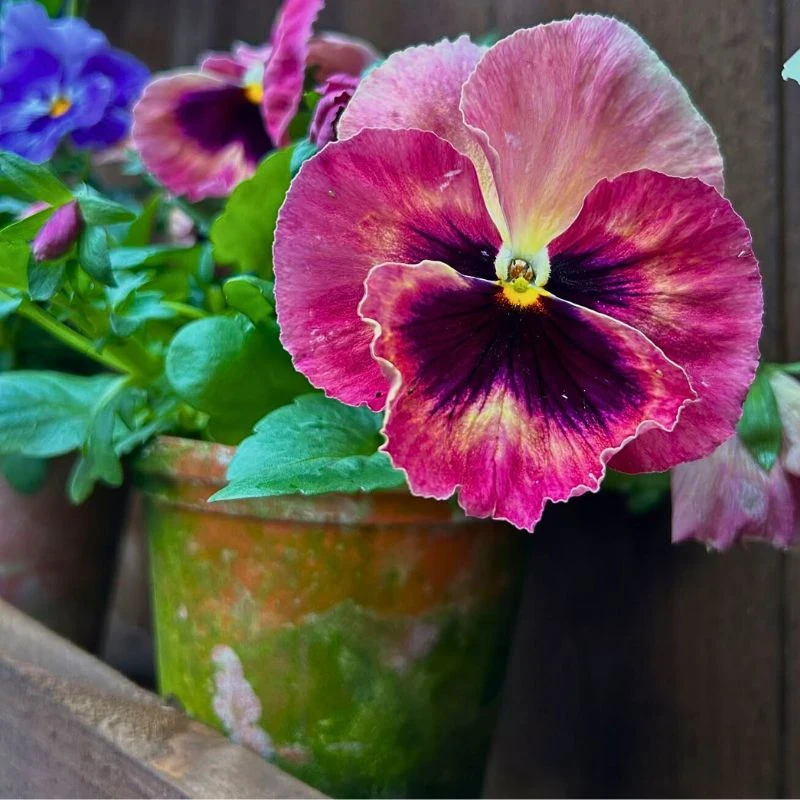Few flowers wear their hearts quite as openly as the pansy (Viola × wittrockiana). With face-like markings that seem to stare back at you when you look at them, these seemingly modest flowers carry fascinating tales and symbolisms, which have lingered for ages. Romantics, poets, floral designers, and even gardeners have always been charmed by them.
The meaning of Pansy flowers encompasses everything from deep contemplation to playful affection. These flowers are, therefore, far more complex than their cheerful appearance might suggest. To, therefore, broadly understand it when someone asks, “What does the pansy flower mean?" It yields a mix of inferences, allegories, and a history of symbolism that cuts across cultures, literature, and human emotion.
Pansy Flowers’ Botanical Background
Pansies belong to the genus Viola, which covers over 500 species of violets—one of the February birth month flowers—and violas distributed across temperate regions worldwide. Modern garden pansies emerged in the early 19th century through hybridization efforts in Britain, primarily involving Viola tricolor (a wild pansy, also called heartsease or love-in-idleness), Viola lutea, and Viola altaica. These hardy plants of the Violaceae family typically grow 6-12 inches tall with distinctive heart-shaped petals.
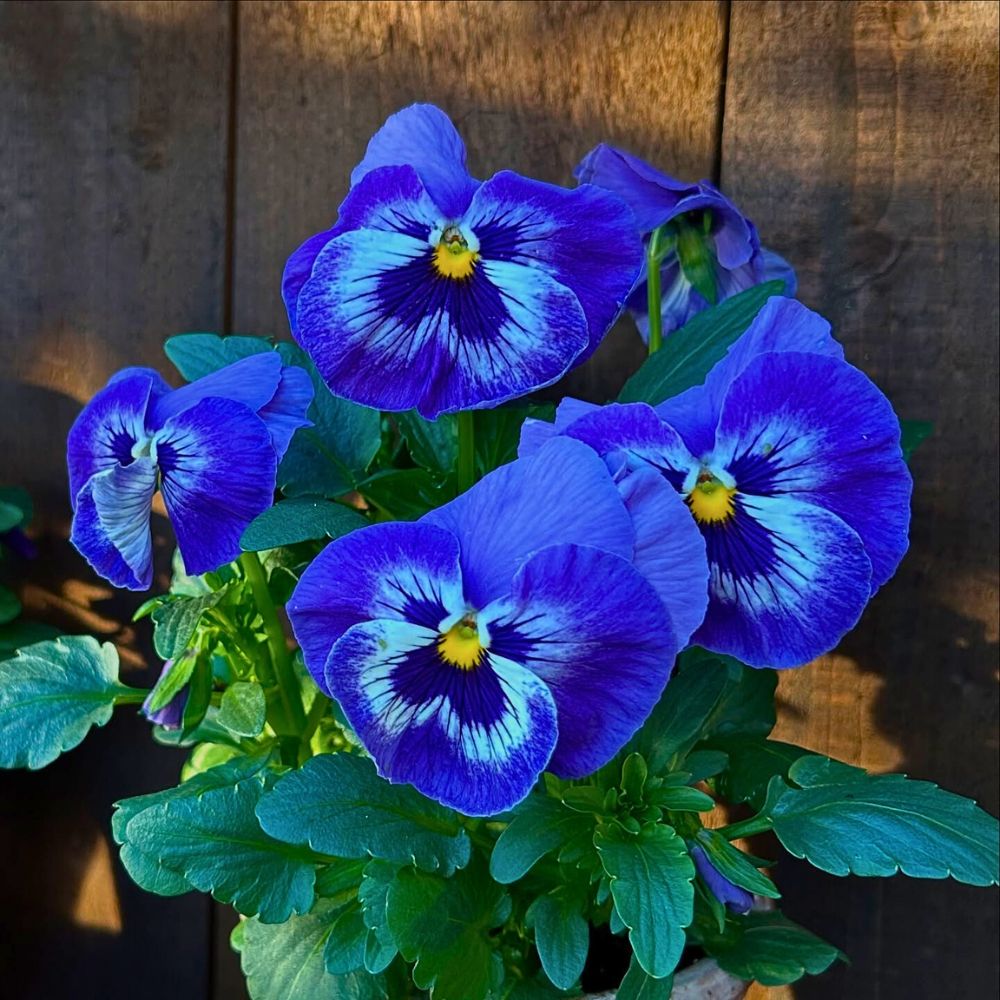
The wild ancestors of modern pansies originated in Europe and western Asia, thriving in meadows, fields, woodlands, and disturbed ground. In the wild, they prefer slightly acidic soils with a pH range between 5-9 and can grow at altitudes up to 575 meters. They flourish in damp, cool climates with well-drained soil conditions.
Modern garden pansies show great adaptability. They tolerate a range of temperatures, though they prefer cooler conditions. They can withstand light frost and continue blooming through different seasons when temperatures remain moderate. These hybrids also combine the hardiness of wild species with larger flowers and more varied coloration, creating the diverse varieties recognized today.
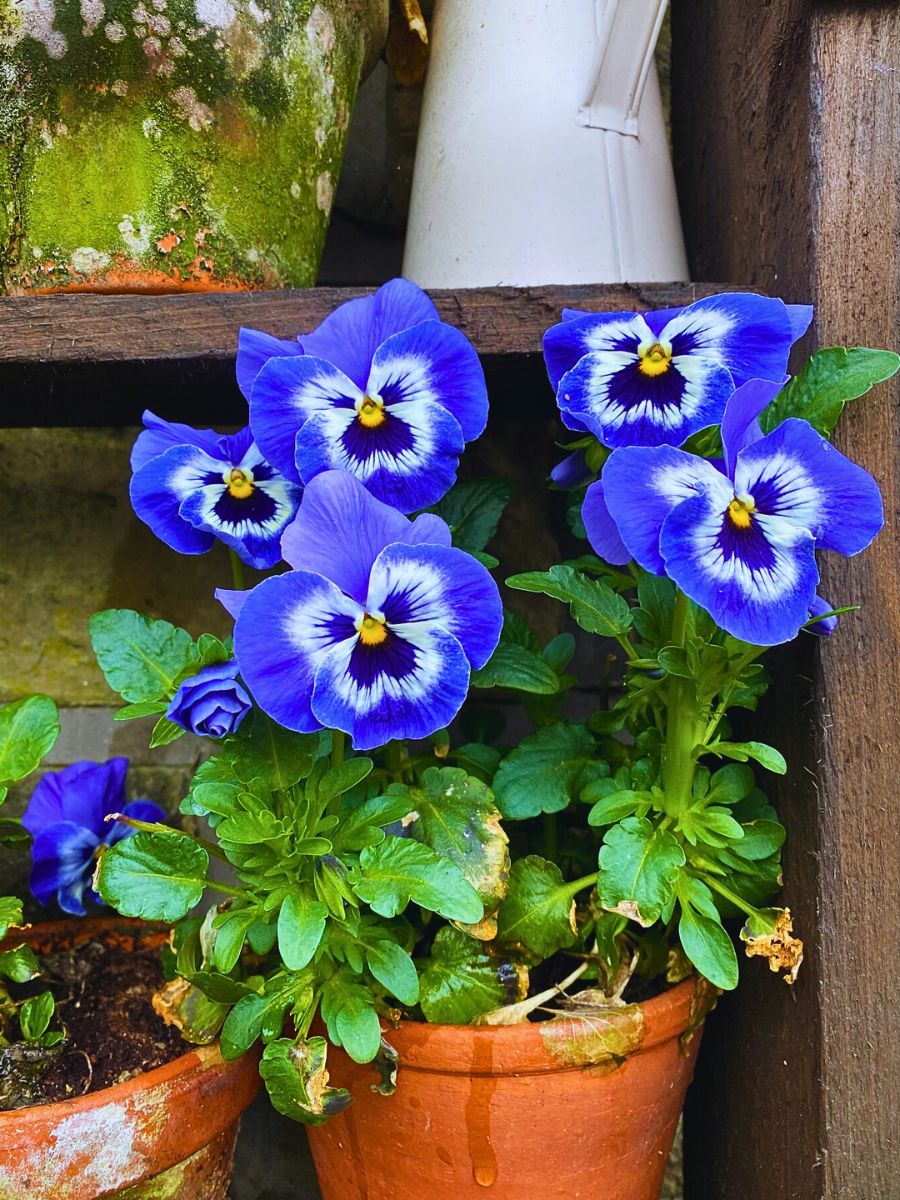
These pansies typically measure 5-7 cm (2-3 inches) across, displaying colors ranging from deep purple and royal blue to sunny yellow, pure white, russet orange, and nearly black. Many varieties feature the distinctive ‘face’ markings—darker blotches and lines that create their characteristic expression.
Pansies are technically short-lived perennials, though most gardeners treat them as cool-season annuals. Since they thrive in temperatures between 4-15°C (40-60°F), they are perfect for spring and fall gardens, where they create compact, colorful mounds.
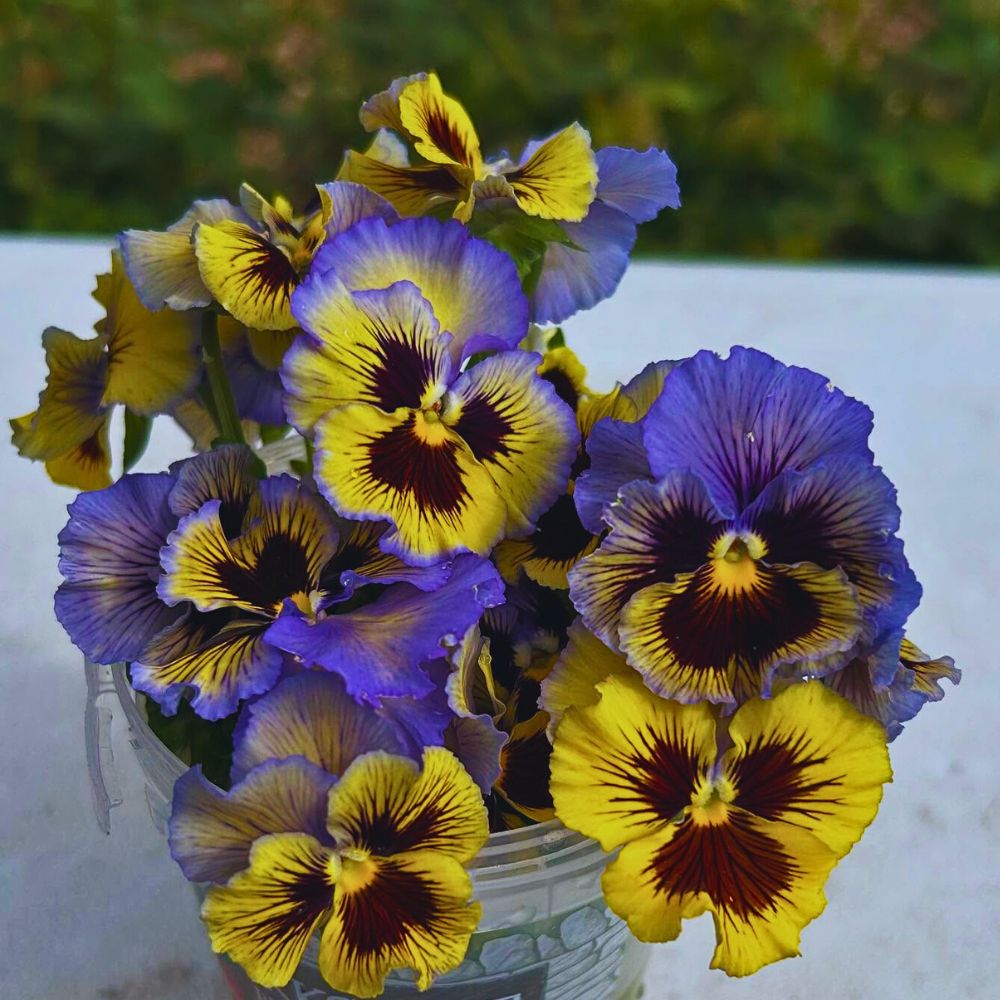
Understanding Pansy Flower Meaning
The meaning of the pansy flower begins with its very name. ‘Pansy’ derives from the French word ‘pensée,’ which translates to ‘thought’ or ‘to think’. This etymological root immediately connects them to contemplation, memory, and the inner workings of the mind. When someone gifted pansies in Victorian times, they were quite literally sending their thoughts to the recipient—a floral message saying "I am thinking of you."
But what are the meanings of pansy flowers beyond this primary symbolism? The answer is much deeper. Pansy flowers simultaneously represent loving thoughts, remembrance of absent friends, free thinking, consideration, meditation, and even admiration. In some contexts, they symbolize the fragility of love, while in others they represent its strength. This multiplicity makes them uniquely versatile in both symbolic and practical applications.
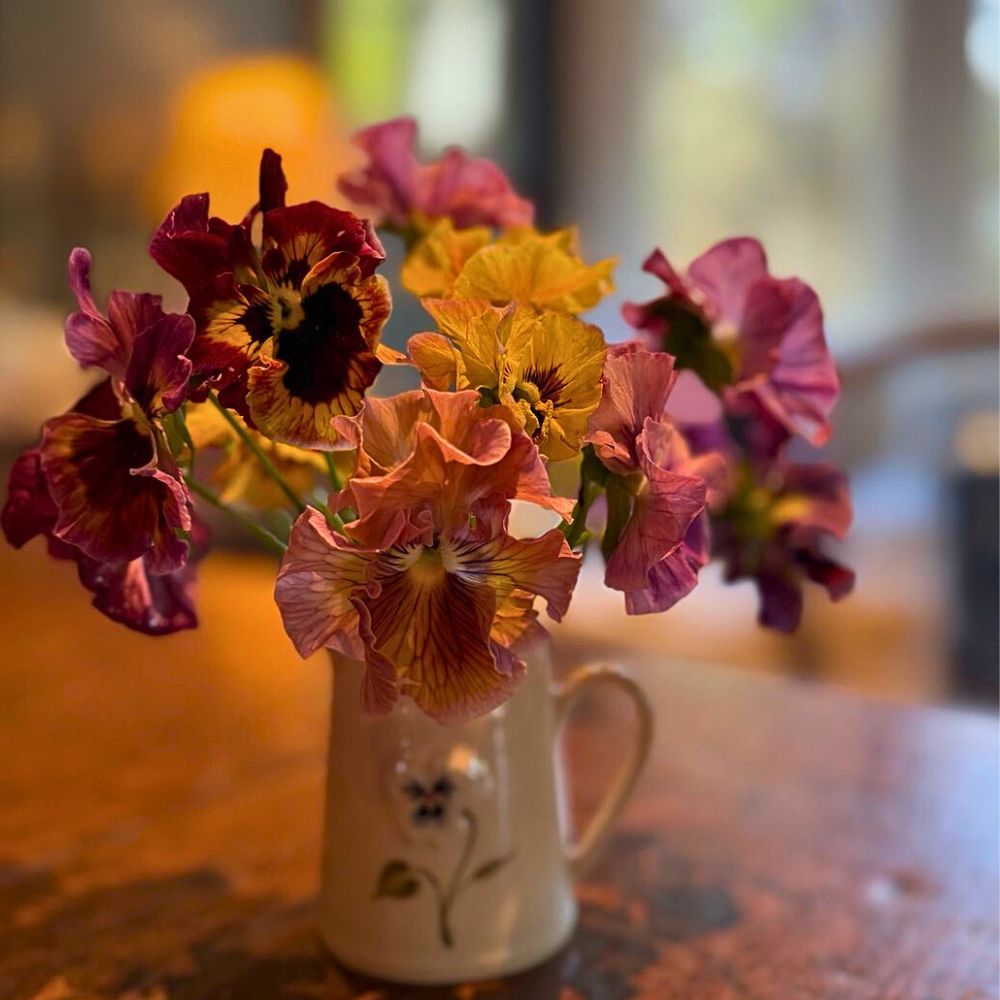
The flower's distinctive appearance—bearing patterns that resemble a human face—has led many cultures to see them as contemplative beings, little philosophers of the garden quietly pondering life's mysteries. This anthropomorphic quality heightens their association with human thought and emotion.
Mythology and Legends of Pansies
Greek mythology offers one origin story for pansy flowers. According to legend, Zeus created the first pansies to provide food for Io, a priestess he had transformed into a white heifer to hide her from his jealous wife Hera. The flowers sprang up wherever Io traveled, ensuring she never went hungry. This myth connects pansies to divine protection and provision.
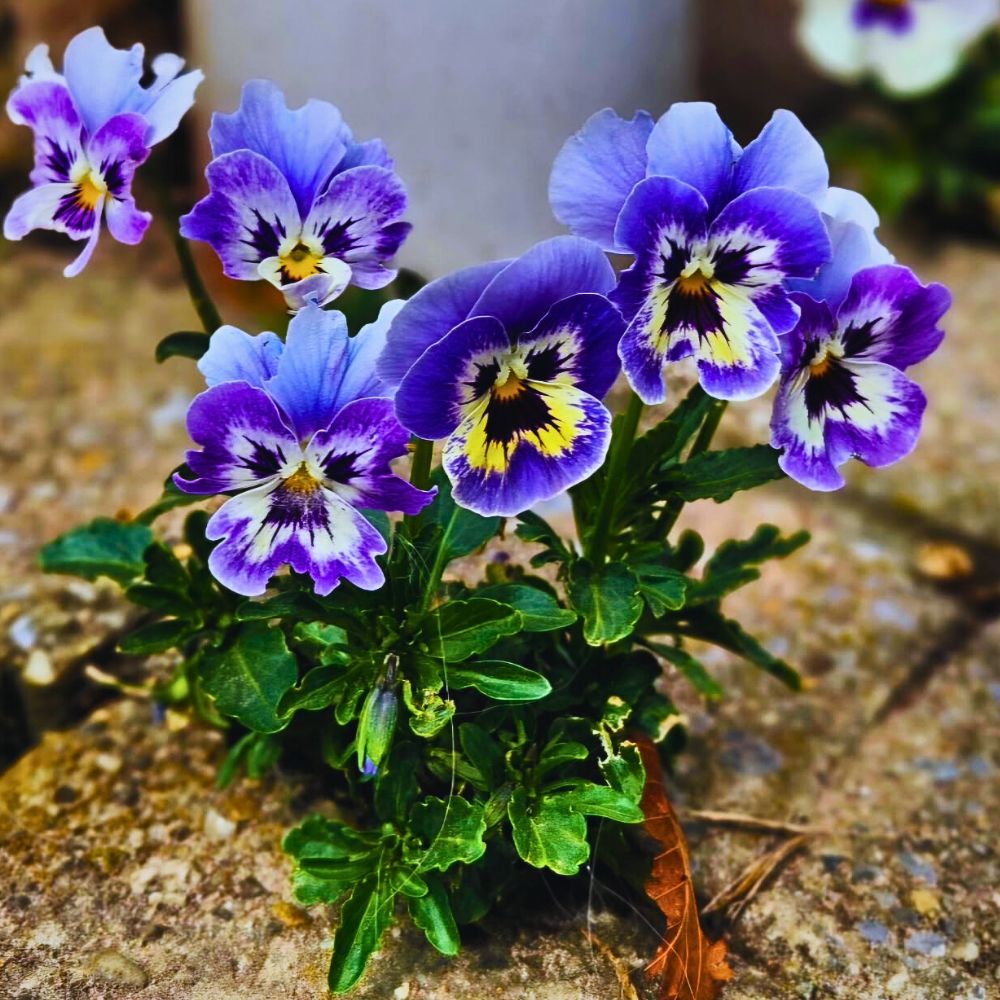
Another classical tale suggests that pansies were once all white until Cupid's arrow accidentally pierced one while he was shooting at nearby targets. The wound caused the flower to turn purple with love's bruise, forever marking it with the colors of passion and giving it power over matters of the heart. This story explains both the flower's varied colors and its association with romantic love.
Medieval European folklore claimed that pansies possessed magical properties. Some believed that if you picked the flower while the dew was still on it and placed it under someone's pillow, that person would dream of their true love. Others thought that carrying pansies could help cure broken hearts or attract romantic attention.
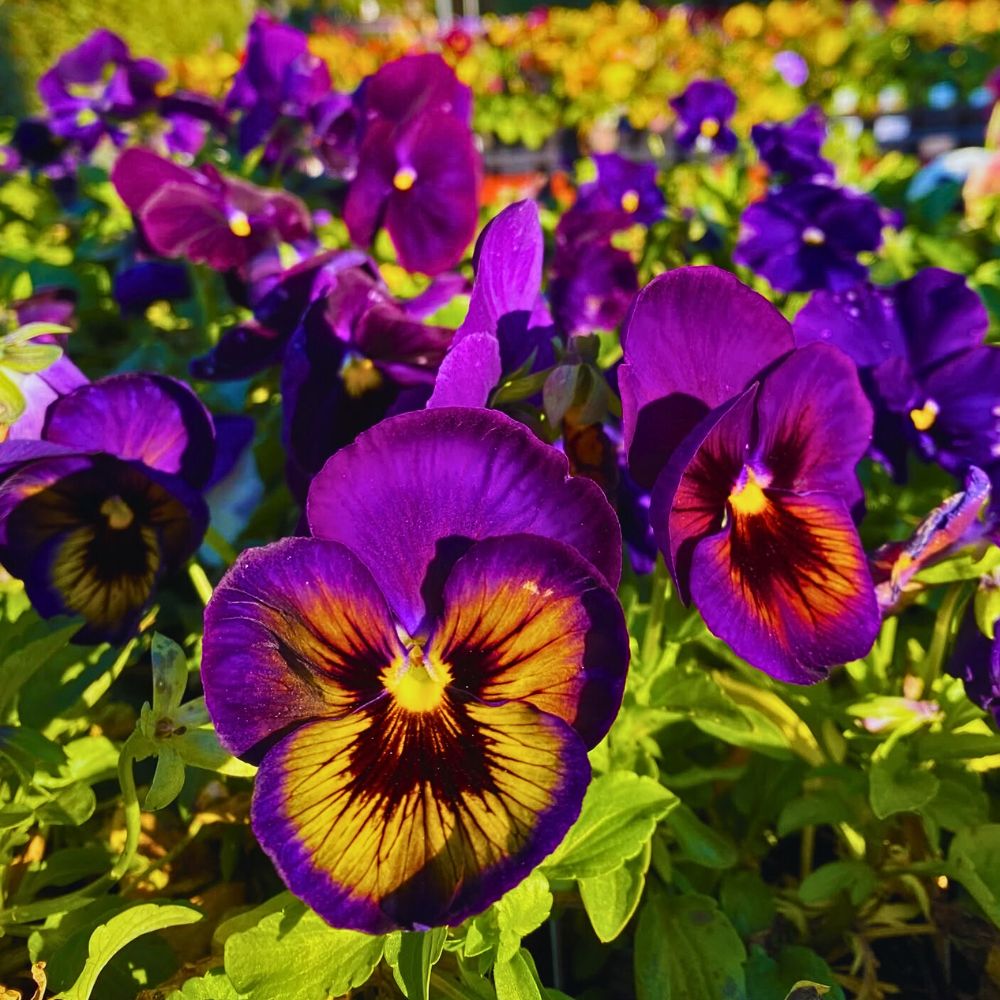
In Celtic tradition, pansies were associated with the fairy world. The flower's face-like appearance suggested these were portals through which fairies might watch the human world, or tiny faces of the fae themselves. Picking them required permission from the fairy folk, lest one invite supernatural misfortune.
Germanic cultures knew pansies as ‘Stiefmütterchen’ (little stepmother), based on a folk tale where the flower's petal arrangement represents a family dynamic. The large bottom petal symbolizes the stepmother, the two side petals represent her daughters, and the smaller upper petals represent the neglected stepdaughters.
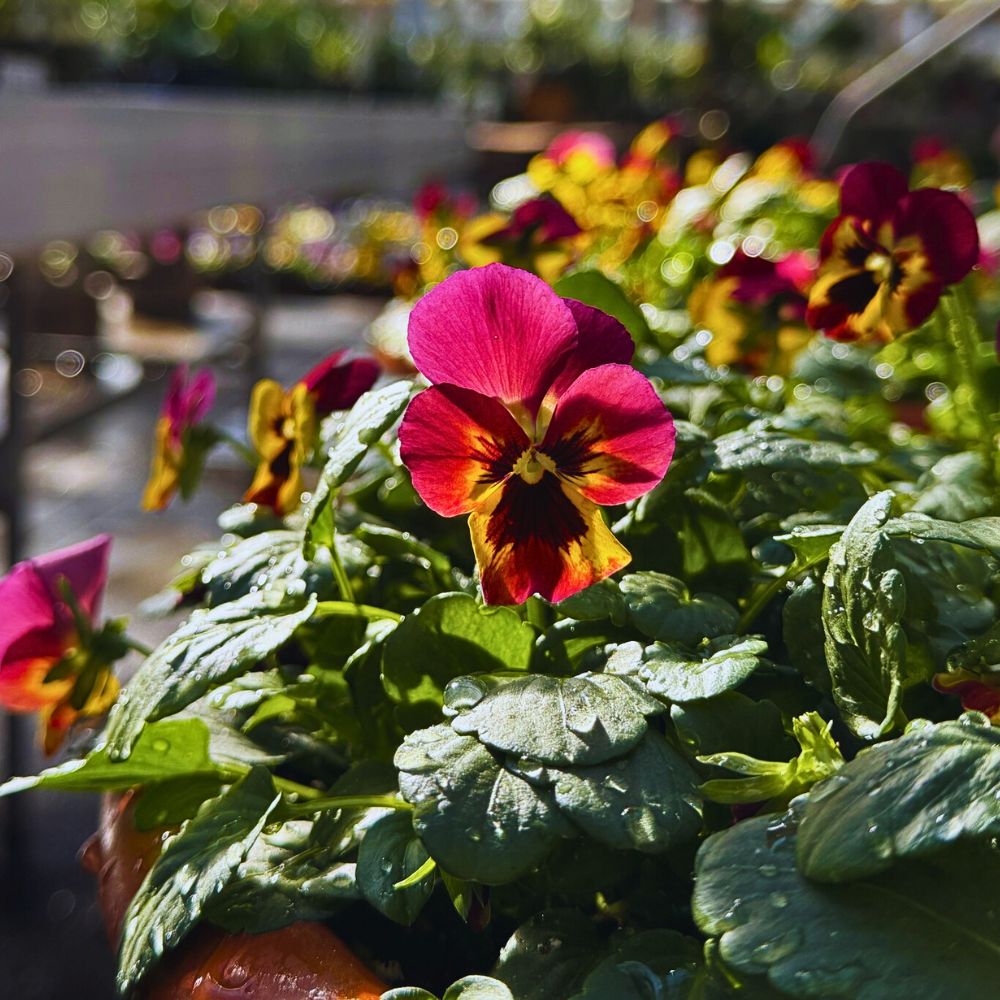
A particularly touching Victorian legend tells of a gardener who bred pansies in every color except one specific shade of blue that matched his late wife's eyes. After years of trying, he finally succeeded, and upon seeing the flower, he wept with joy, believing his beloved had sent him a sign from beyond. This story, perhaps, reinforces the pansy flower meaning of remembrance and lasting love.
Pansies Historical and Cultural Symbolism
The pansy flower's meaning carries different weight across different cultures and historical periods. In Victorian flower language—that elaborate system where flowers conveyed coded messages—pansies held special significance. Purple pansies symbolized royalty and admiration, white ones represented purity and innocence, yellow varieties conveyed remembrance, and blue pansy flowers expressed faithfulness and lasting love. They were also generally messengers of romantic feelings, particularly forbidden or unrequited love. Young couples exchanged them to express sentiments that social conventions prevented them from speaking aloud.
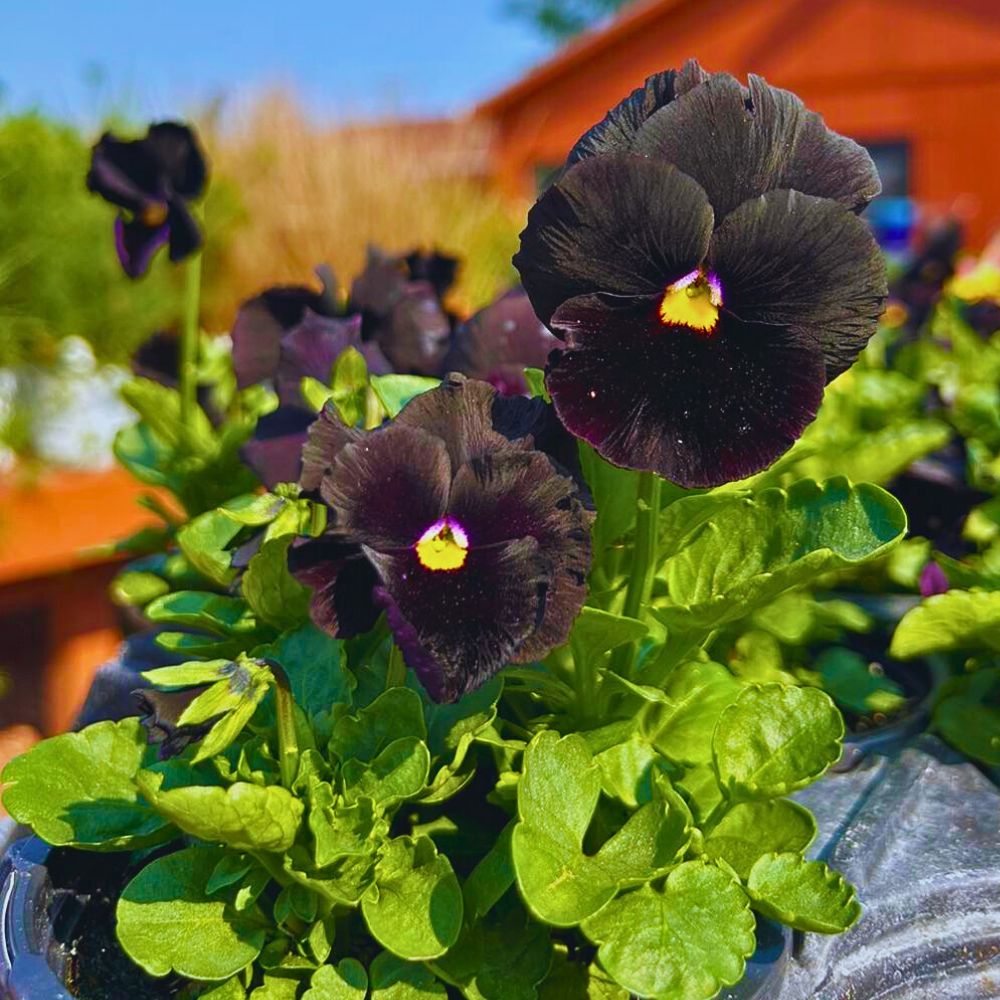
During the Victorian age, therefore, these flowers became essential components of ‘tussie-mussies,’ small bouquets that carried complex messages between lovers. The specific arrangement and colors communicated different emotional states and romantic intentions.
Shakespeare famously featured pansies in both ‘A Midsummer Night's Dream’ and ‘Hamlet.’ In the former, Oberon uses pansy juice as a love potion, calling the flower ‘love-in-idleness.’ This magical association links them to romance, desire, and the often-irrational nature of love. In ‘Hamlet,’ Ophelia mentions pansies in her famous flower scene, strengthening their connection to remembrance and thought during her descent into madness.
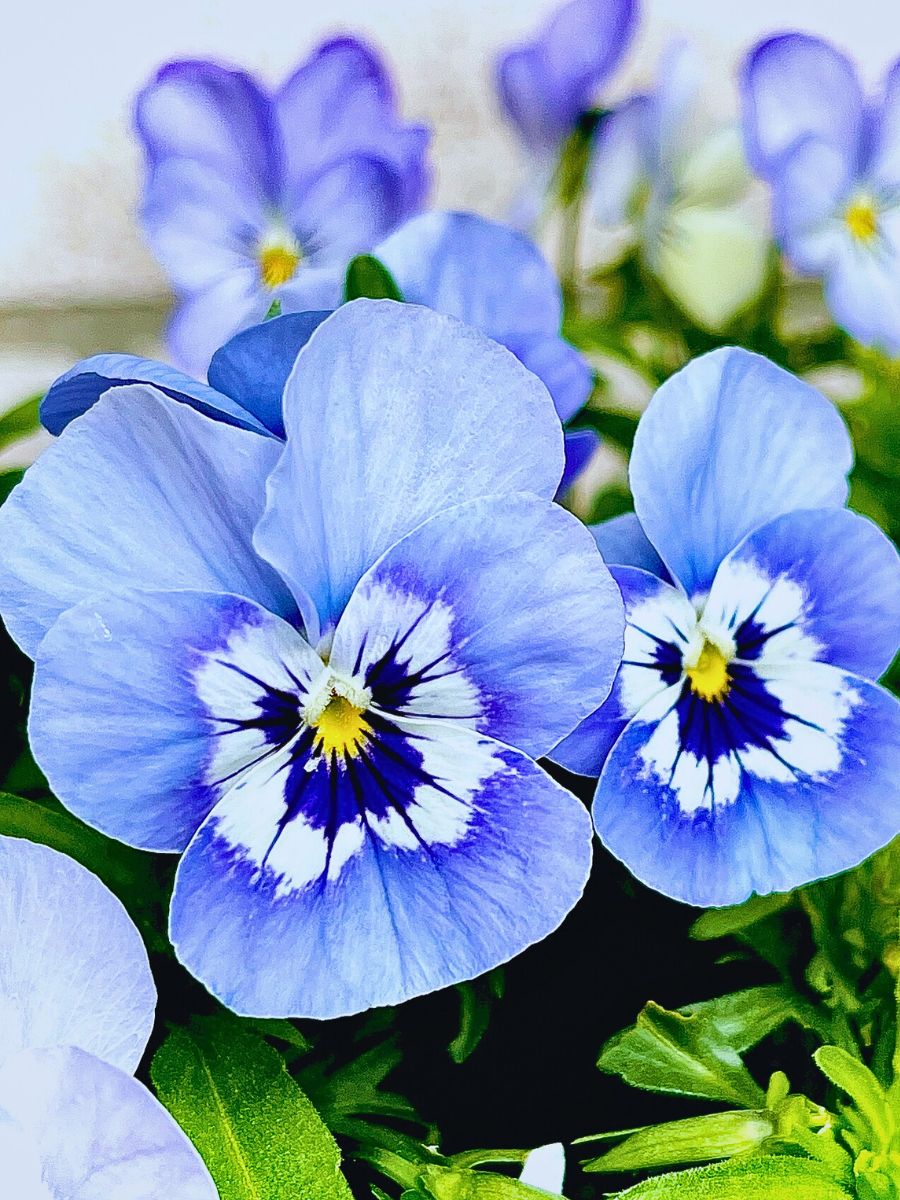
French culture particularly embraced the meaning of the pansy flower through its name, ‘pensée.’ Poets and artists frequently used pansy flowers in their work to represent philosophical contemplation and intellectual pursuit. The late 19th century saw pansies adopted as symbols by the Free Thinkers Society in France, representing intellectual freedom from traditional constraints. The flower signified free thinkers and those who questioned established norms; an association that reinforced the connection between pansies and independent thought.
In Christian symbolism, the three colors found in wild pansies (purple, yellow, and white) were sometimes interpreted as representing the Holy Trinity. The face-like markings were seen as representing the face of Christ, which added spiritual connotations to the general pansy flower meaning. American culture also adopted pansies enthusiastically during the Victorian era. They became common in memorial gardens and cemetery plantings. Their association with remembrance made them appropriate for honoring the deceased, while their cheerful appearance provided comfort to the grieving.
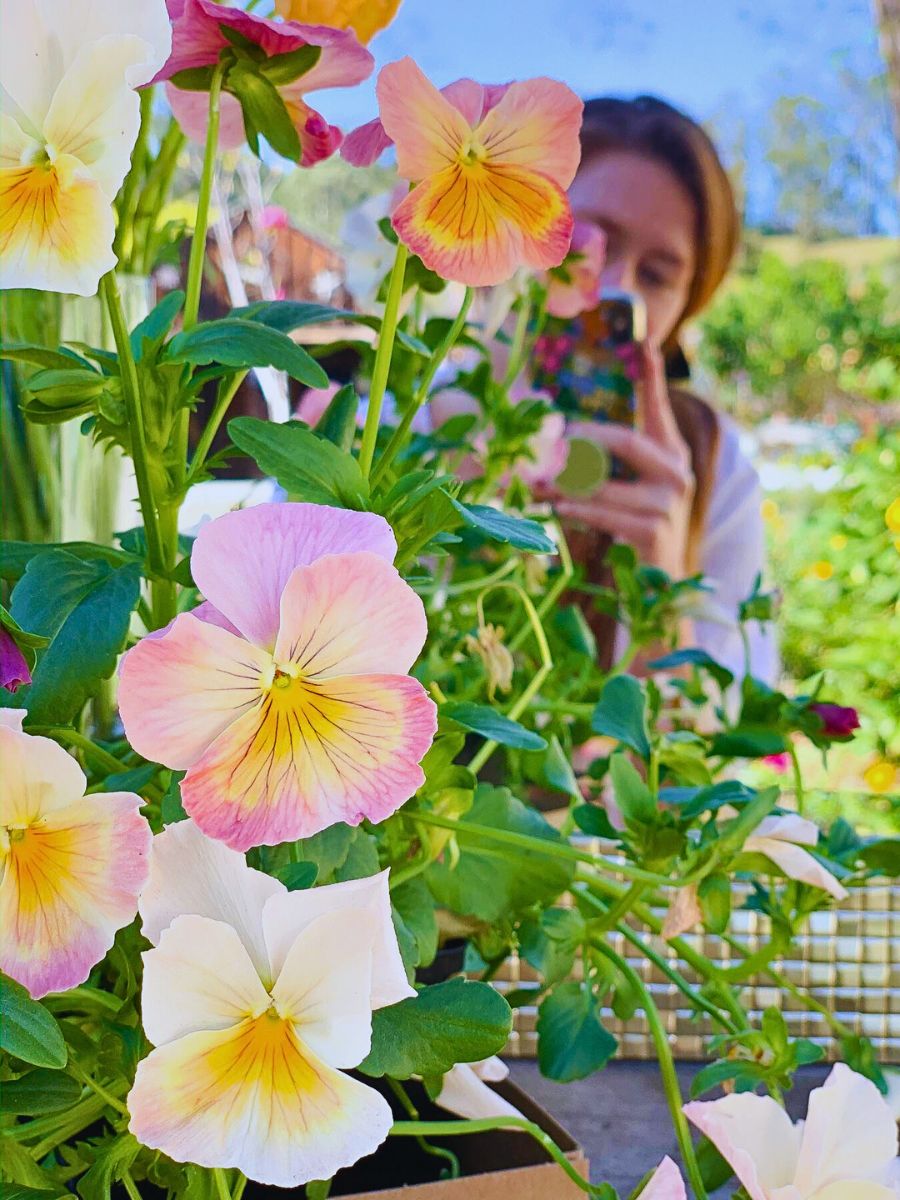
What Are the Meanings of Pansy Flowers by Color?
While the general meaning of the pansy flower centers on thought and remembrance, specific colors carry additional symbolism. Purple pansies represent royalty, dignity, and accomplishment. They are excellent choices for congratulating someone on an achievement or showing respect and admiration. Yellow pansies symbolize remembrance of happy times, cheerfulness, and optimism. They are ideal for sending to friends you have not seen in a while or brightening someone's difficult day.
White pansies convey purity, innocence, and spirituality. They work beautifully in wedding flowers or sympathy arrangements, depending on context. Blue pansies express faithfulness, loyalty, and constancy. They make meaningful gifts for long-term partners or steadfast friends. Orange pansies, on the other hand, represent energy, enthusiasm, and warm feelings. They suit celebrations and expressions of friendship.
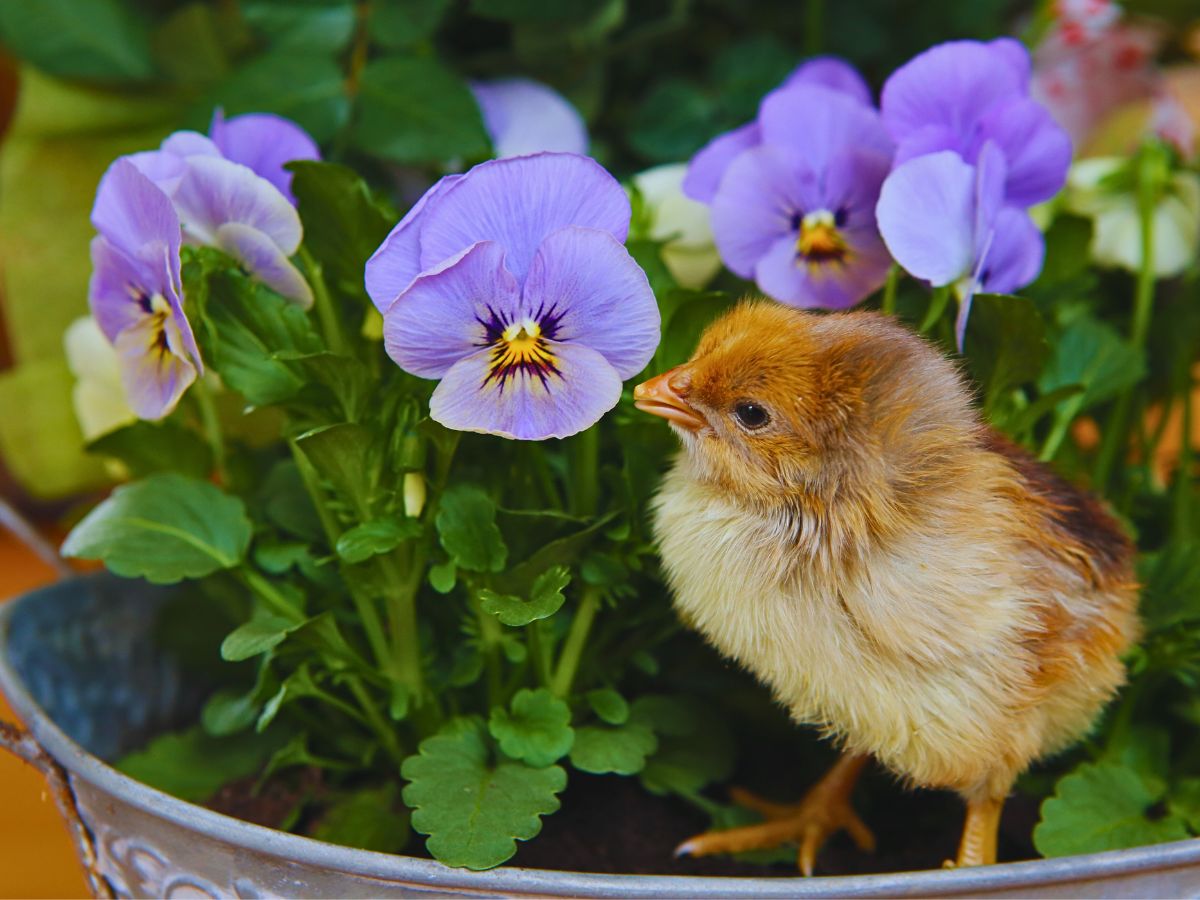
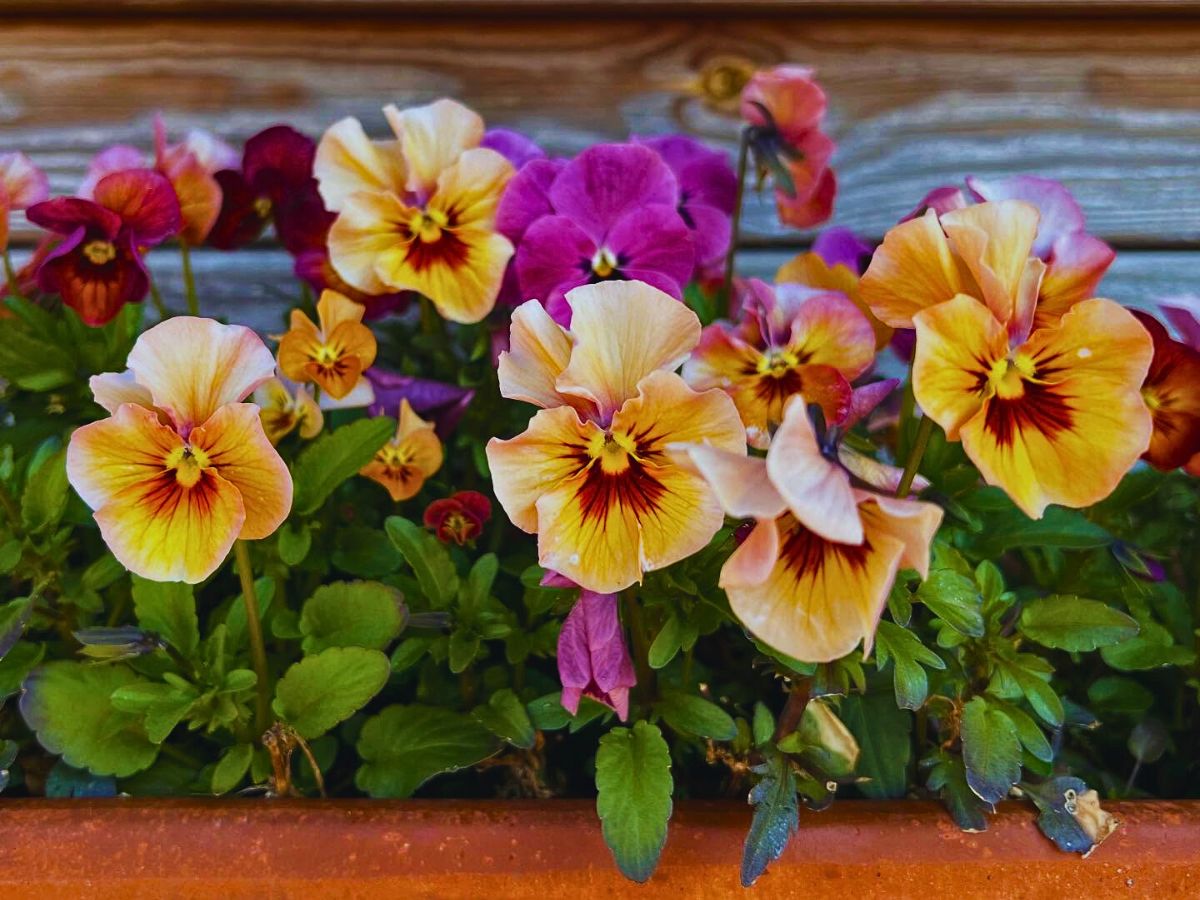
Red and burgundy pansies naturally connect to passionate love and deep romantic feelings, though they are less common than other colors. Black pansies, which are actually very deep purple, symbolize mystery, elegance, and sometimes farewell. They create dramatic statements in Gothic or urbane designs. Understanding all these color meanings allows for more nuanced use of pansy flowers in arrangements and gardens where symbolic communication matters.
Pansy Flowers in Floral Design and Décor
Pansies are not just garden or pot flowers. They offer exceptional versatility in floral design. Their flat faces photograph beautifully and make them popular for pressed flower art, botanical illustrations, and decorative crafts. The flowers' relatively long vase life of 5-7 days with proper care, and their ability to tolerate cool temperatures, make them practical for arrangements.
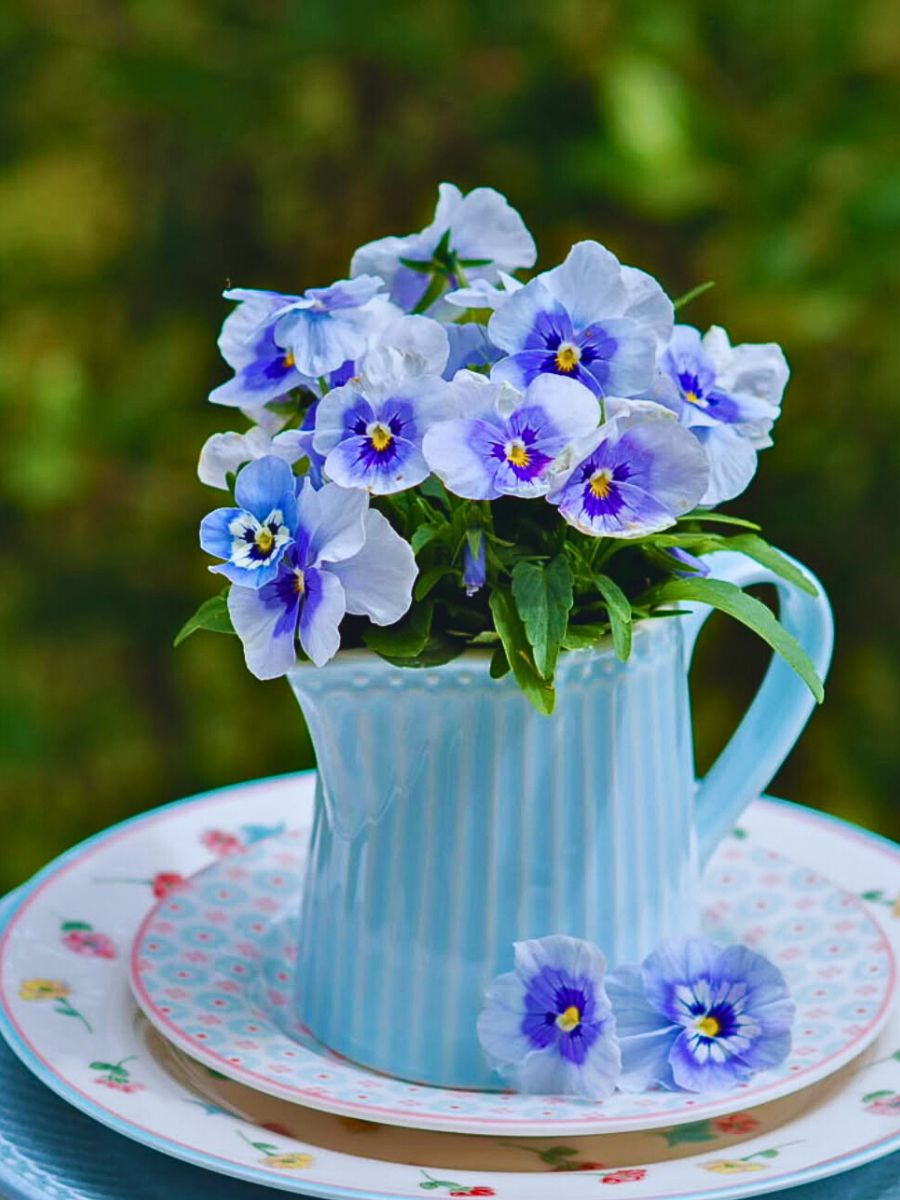
In fresh floral design, pansy flowers work wonderfully in spring bouquets, particularly when combined with other cool-season flowers like Ranunculus, Anemone, tulips, and sweet peas. Their varied colors allow them to complement virtually any palette, while their distinctive faces add personality and whimsy to arrangements.
For home décor, pansies do well in several applications. Small posies in vintage teacups or mason jars create charming centerpieces for casual gatherings. Floating pansy faces in shallow bowls of water make an elegant table decoration that showcases their beautiful markings. Pressing pansies between book pages preserves them for use in greeting cards, framed art, or scrapbooking projects.
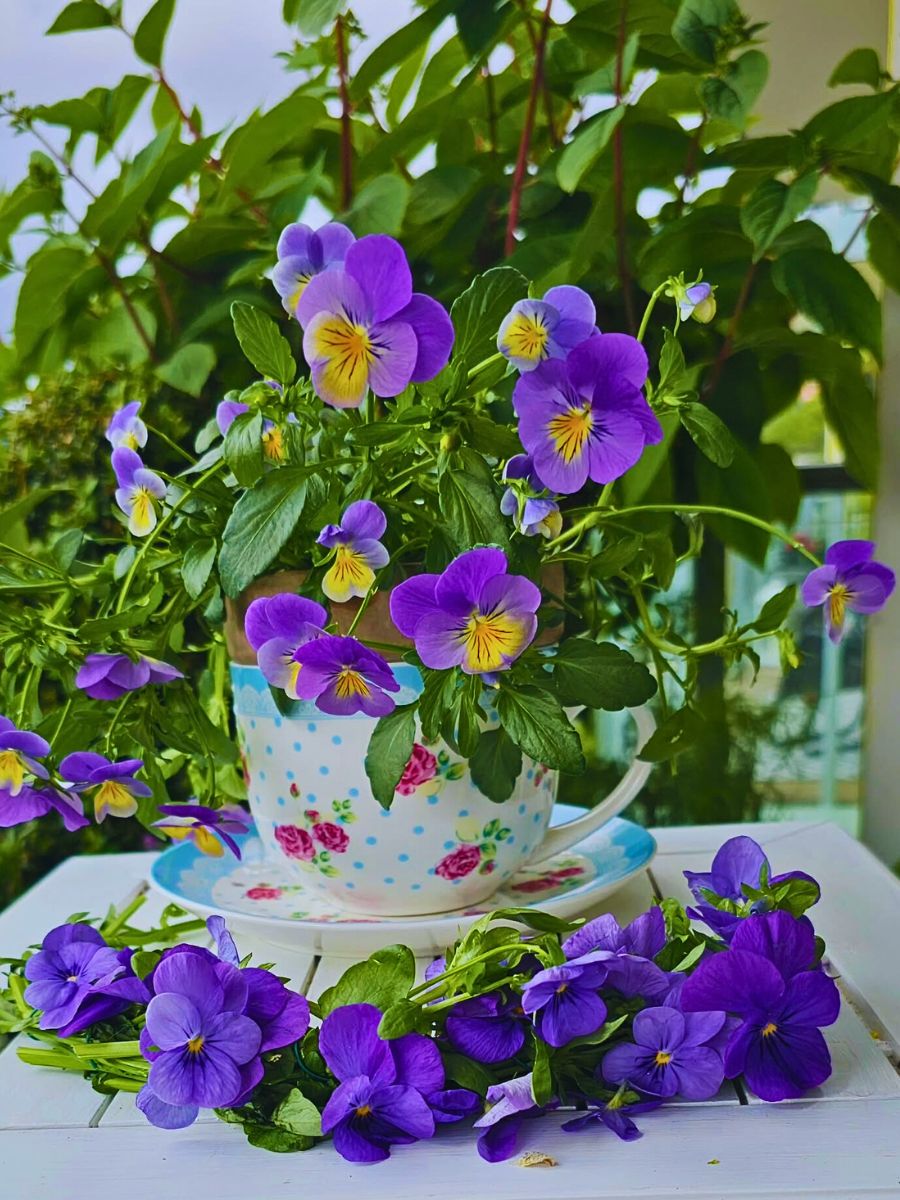
Pansies also work beautifully in edible flower applications. The entire flower is, practically, edible, with a slightly sweet, grassy flavor. Candied pansies make exquisite cake decorations, while fresh flowers can garnish salads, desserts, and cocktails. Their symbolic association with thought and memory makes them particularly ideal additions to celebration cakes or memorial desserts.
In garden design, pansy flowers stand out in mass plantings where their colors can create bold patterns or gentle gradients. They work well in containers, window boxes, hanging baskets, and as edging plants along pathways. Their cool-season nature means they provide color when many other flowers have finished, thus they are prized for extending the garden's visual interest.
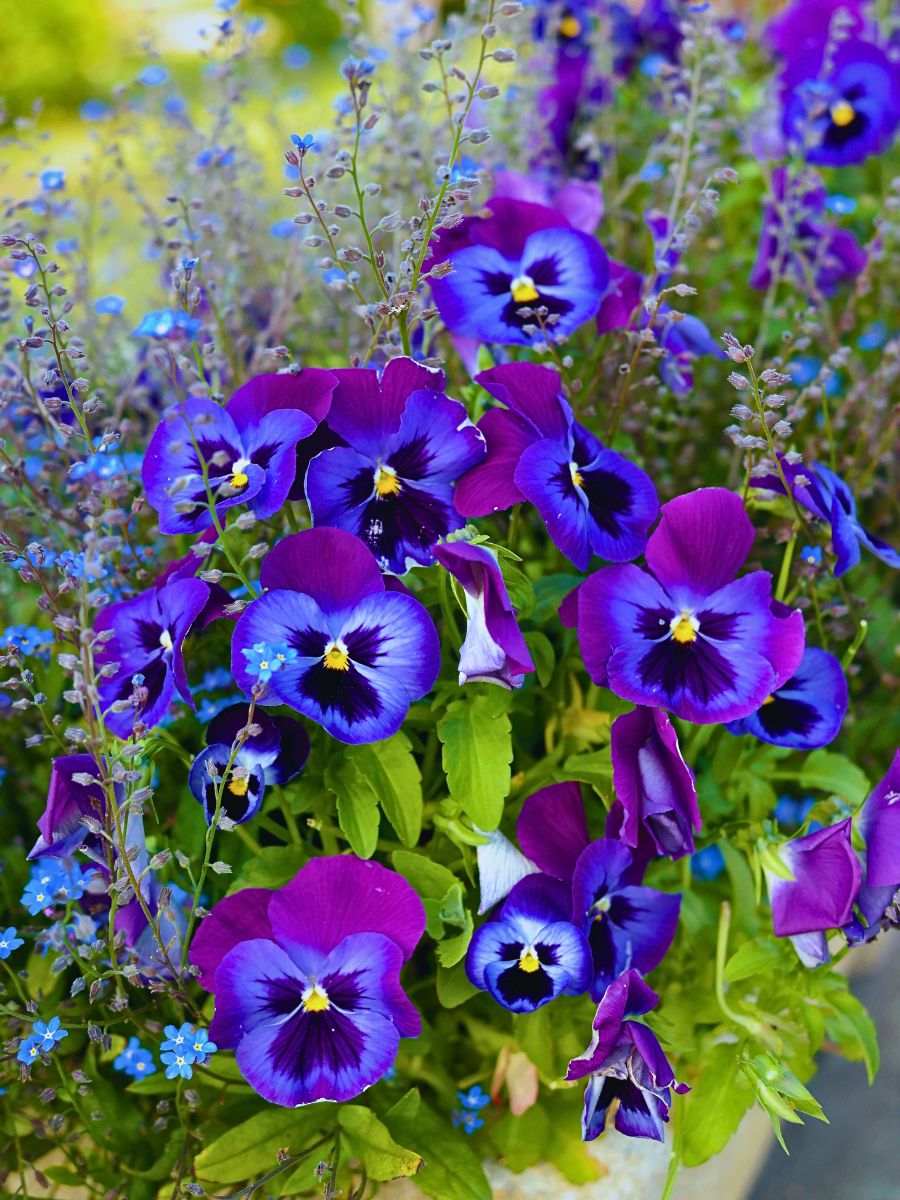
Growing Pansies Successfully
To successfully grow pansies, one requires understanding their preference for cool weather. Plant them in early spring or fall, avoiding summer heat that causes them to become leggy and stop flowering. They prefer full sun to partial shade—in warmer climates, afternoon shade helps them perform better. Pansy flowers also thrive in well-draining, rich soil with plenty of organic matter. Regular watering keeps them flowering abundantly, though they tolerate short dry periods better than waterlogging. Deadheading spent flowers encourages continuous blooming and prevents them from setting seed prematurely.
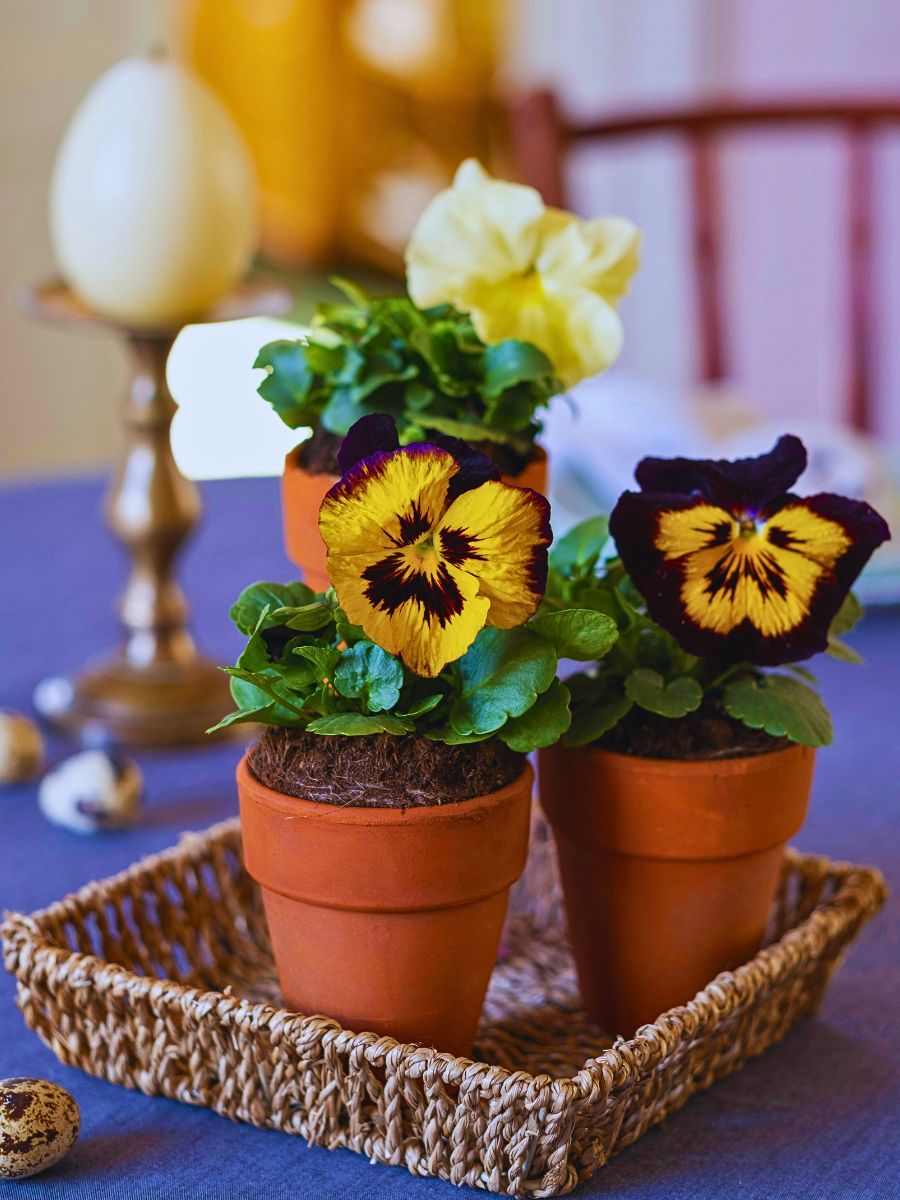
Also, one should feed pansies fortnightly with balanced liquid fertilizer to support their prolific flowering habit. In mild climates, they may bloom throughout winter, providing precious color during dormant months. Some varieties tolerate light frost, making them reliable performers even when other annuals have succumbed to cold. Growing pansies from seed takes patience—sow seeds 10-12 weeks before your planting date, keeping them cool during germination. Many gardeners, however, prefer buying transplants from nurseries, which allows for easier planting and immediate color.
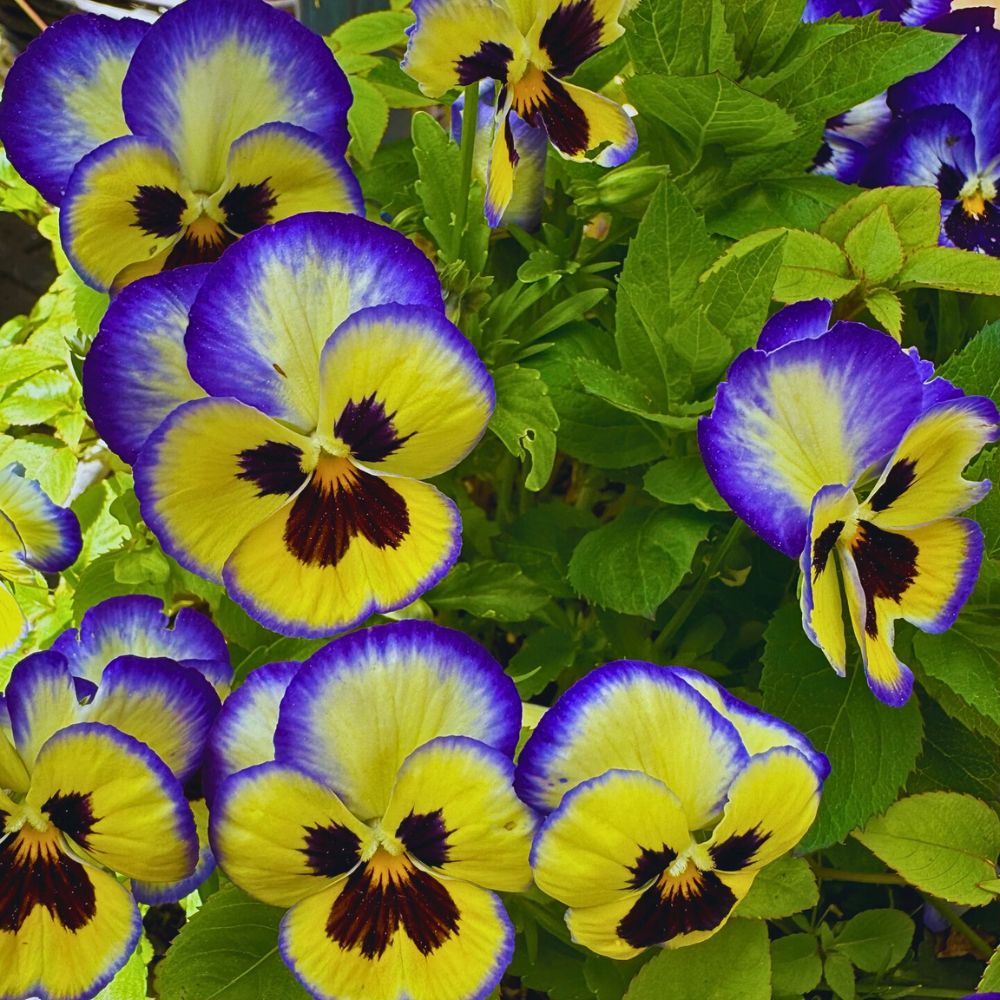
So, back to the question, “What do pansy flowers mean?” What is the appeal of these thoughtful flowers? Perhaps the truest pansy flower meaning lies in their beautiful contradiction: they are flowers that make you think, yet they don't take themselves too seriously.
Feature image by @the_little_end_cottage. Header image by HansLinde.

